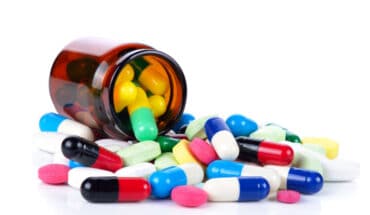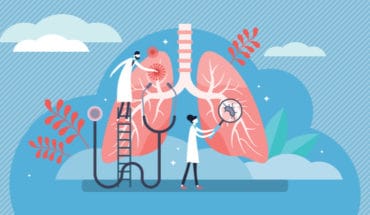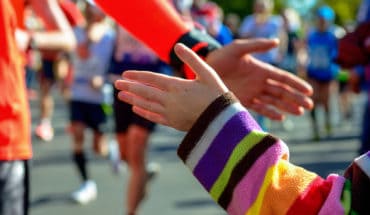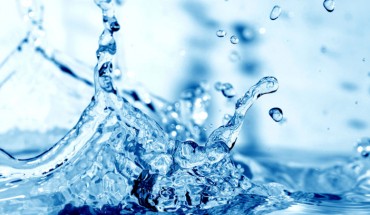Australian children are some of the least active in the world. University of Newcastle researchers are addressing this head on with a range of innovative school-based programs that are getting our kids moving.
For the third time in a row, Australia recorded a D- for overall physical activity among children in a national report commissioned by Active Healthy Kids Australia.1 It found less than 20 percent of children and adolescents are considered to be sufficiently active.
The annual economic burden of physical inactivity in Australia is estimated to be over $555 million.2
While schools are one of the best investments for evidence-based physical activity, University of Newcastle researchers believe too few are achieving their health promotion potential.
Of those schools where physical activity interventions have been evaluated, most have only involved primary schools, and few have progressed beyond initial testing to be rolled out to schools more broadly.
Laying the foundations for an active life
Over the last 15 years, Professor David Lubans and his colleagues in the University of Newcastle’s Priority Research Centre for Physical Activity and Nutrition have worked with hundreds of schools and school communities to increase the quality and quantity of physical activity in our kids.
The team has created effective programs that help students improve their confidence, competence, motivation and knowledge to be physically active across their lifespan.
Scoring goals early
Funded by a $220,000 grant from the Hunter Medical Research Institute, the research group developed the SCORES program (Supporting Children’s Outcomes using Rewards, Exercise and Skills). This whole-of-school intervention increased physical activity in primary school children, improved their fundamental movement skills, and enhanced their cardiorespiratory fitness.
Following the success of SCORES, the University of Newcastle partnered with the NSW Department of Education and the Australian Catholic University to secure a $1.3 million Partnership Grant from the National Health and Medical Research Council to rollout an adapted program known as iPLAY.
iPLAY has so far been rolled-out to more than 160 primary schools in NSW and reached over 2,500 teachers. The program has been well received by students and teachers.
The two-day iPLAY workshop we did was by far the best prepared, best presented and most meaningful one I’ve been involved in” – Mr Garry Mears, iPLAY Mentor
In 2019, Sport Australia announced the program will be made available to primary schools across the country from 2020, through its Exemplary School Program.
Bringing movement into the classroom
The crowded curriculum in primary schools often leaves little room for the promotion of physical activity. University of Newcastle researchers have found a clever way to overcome this with the ‘Thinking While Moving’ program.
Backed by funding from the NSW Department of Education, the program integrates physical activity into key learning areas such as mathematics and English. Results showed an improvement in students’ school-time physical activity and their on-task behaviour in the classroom.
Since 2014, the Priority Research Centre team has trained more than 300 teachers from 257 primary schools to deliver the program.
The forgotten physical activity guideline
National and international guidelines recommend that children and adolescents participate in resistance training to build muscle strength at least three days per week. Despite the well-established benefits of resistance training at all stages of life, participation rates among adolescents are low.
To overcome this, a team from the Priority Research Centre developed the ‘Resistance Training for Teens’ program. It was evaluated in a cluster randomised controlled trial involving 16 schools, which showed improvements in adolescents’ muscular fitness, body composition, resistance training confidence and skill competency.
Nearly 480 teachers from more than 200 secondary schools in NSW have received training to deliver this program. Researchers are working to extend the program even further and have partnered with the NSW Department of Education, six Local Health Districts in NSW, Catholic Education Western Australia and the Association of Independent Schools Western Australia on a funding bid that would see them conduct an implementation evaluation of the program in three Australian states (NSW, VIC and WA).
Easing the stress of high school
The final years of high school are stressful for many senior school students. While participation in physical activity can reduce stress and improve mental health, few schools provide mandatory physical activity time for senior school students.
In partnership with the NSW Department of Education, university researchers received more than $660,000 from the National Health and Medical Research Council to evaluate a time-efficient physical activity intervention for older adolescents.
The ‘Burn 2 Learn’ program was evaluated in a cluster randomised controlled trial and demonstrated a range of positive outcomes, especially among students considered at-risk of poor mental health.
The activities were short and easy enough to do. I felt great after every single time.” – Burn 2 Learn participant
Professor Lubans and his team have started rolling out the ‘Burn 2 Learn’ program in NSW schools through a series of online teacher professional learning workshops.
1 Active Healthy Kids Australia Report Card on Physical Activity for Children and Young People, 2018
Professor David Lubans : Over the last 15 years, we have worked with hundreds of schools and school communities to increase the quality and quantity of physical activity for Australian kids. Case Study download.
- New lipid-based pathway discovered as key to memory formation - 25th June 2025
- Crucial link could explain how Alzheimer’s takes hold - 25th June 2025
- Understanding Your Mind Can Improve Daily Life - 25th June 2025







